Humidity contamination is a critical concern in the storage of metal powders, as it can significantly compromise their quality and usability. Metal powders, widely used in industries such as additive manufacturing, metallurgy, and powder coating, are highly susceptible to moisture, which can lead to oxidation, clumping, or even hazardous reactions. Proper storage practices are essential to maintain the integrity of these materials, ensuring they perform optimally in their intended applications. This blog post explores the challenges posed by humidity and provides a comprehensive guide to best practices for storing metal powders, safeguarding their quality and safety.
At Heeger Materials Inc., we specialize in high-quality metal powder products with various materials and specifications, ensuring optimal performance for industrial and scientific applications.
Understanding Humidity Contamination in Metal Powders
What is Humidity Contamination?
Humidity contamination occurs when metal powders absorb moisture from the surrounding environment, leading to physical and chemical changes. Moisture can cause oxidation, where metal particles react with oxygen to form oxides, reducing their purity and effectiveness. For example, iron powders may rust, while aluminum powders can form a thin oxide layer that alters their properties. Additionally, moisture can cause powders to clump, making them difficult to process in applications such as 3D printing, where uniform flow is crucial. In severe cases, reactive metals like magnesium may even ignite when exposed to moisture, posing safety risks.
The extent of humidity contamination depends on the type of metal powder and environmental conditions. Fine powders with high surface areas are particularly vulnerable, as they provide more surface for moisture interaction. Understanding these effects is the first step in developing effective storage strategies to protect metal powders.
Impact on Applications
Humidity contamination can have profound consequences across various industries. In additive manufacturing, moisture-contaminated powders can lead to poor layer adhesion, porosity in printed parts, and inconsistent mechanical properties. In metallurgy, oxidized powders may result in defective alloys with reduced strength or durability. For powder coating, clumping caused by moisture can clog equipment and produce uneven coatings, increasing production costs. The table below summarizes the impacts of humidity contamination on key industries:
Industry | Impact of Humidity Contamination |
Additive Manufacturing | Poor flowability, porosity, and weak mechanical properties |
Metallurgy | Defective alloys, reduced strength, inconsistent quality |
Powder Coating | Clogged equipment, uneven coatings, and increased costs |
Explore our optimized metal powder products.
Key Factors Influencing Humidity Contamination
Several key factors influence humidity contamination, affecting its severity and impact across different environments. Understanding these factors helps in preventing moisture-related issues in industries, laboratories, storage facilities, and even residential settings.
1. Environmental Conditions
- Ambient Humidity Levels: High relative humidity (RH) increases moisture absorption by materials.
- Temperature Fluctuations: Warm air holds more moisture, and sudden cooling (e.g., condensation on cold surfaces) can lead to contamination.
- Climate & Weather: Tropical or coastal regions naturally have higher humidity, increasing contamination risks.
2. Material Properties
Not all metal powders react to humidity in the same way. The chemical composition and particle size of the powder determine its susceptibility to moisture. For example:
- Aluminum: Prone to forming an oxide layer, which can affect its performance in high-precision applications.
- Titanium: Highly reactive in moist environments, leading to potential quality degradation.
- Iron: Susceptible to rusting, which compromises its structural integrity.
- Magnesium: Extremely reactive, with a risk of spontaneous combustion when exposed to moisture.
Fine powders with smaller particle sizes have a higher surface area-to-volume ratio, making them more prone to moisture absorption than coarser powders. Understanding these material-specific vulnerabilities is crucial for tailoring storage solutions.
3. Storage & Handling Practices
Packaging Integrity:
- Leaky or Non-Hermetic Seals: Allow moisture ingress (common in plastic bags or poorly sealed drums).
- Vacuum-Sealed or Argon-Flushed Containers: Best for reactive powders.
Desiccants & Inert Atmospheres:
- Silica gel or nitrogen purging reduces moisture exposure.
Storage Duration:
- Long-term storage increases contamination risk even in controlled environments.
Discover our high-quality metal powder products.
The Condition of Metal Powders Being Exposed to Moisture
Metal Powder Slightly Absorbs Moisture:
The metal powder has slightly absorbed moisture, leading to some layer separation and minor agglomeration.
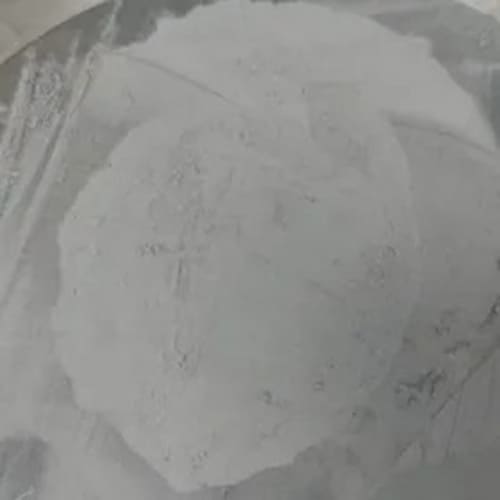
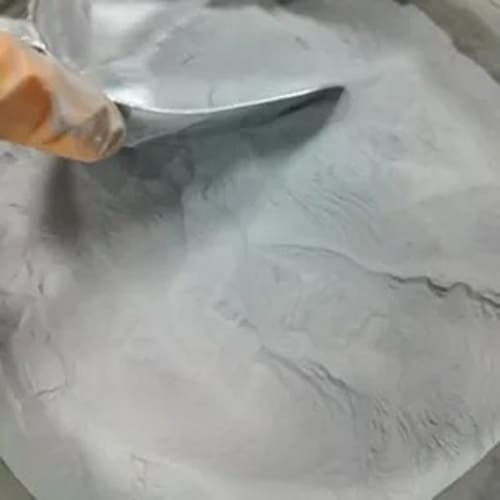
Metal Powder Severely Exposed to Moisture:
The metal powder has been severely exposed to moisture, resulting in clumping and significant agglomeration.


Looking for high-quality metal powder products? Explore Heege Materials’ selection.
Ideal Storage Conditions for Metal Powders
Storing metal powders under controlled conditions is essential to avoid moisture contamination. Here are the ideal storage conditions for metal powders:
- Temperature: The temperature should be stable and moderate, typically between 15°C and 25°C. Extreme temperature fluctuations can lead to condensation inside storage containers, causing moisture accumulation.
- Humidity Levels: Ideally, humidity should be kept below 50%. Higher humidity levels increase the likelihood of condensation and oxidation, especially when temperatures fluctuate.
- Air-tight Containers: Storing metal powders in air-tight, moisture-proof containers prevents exposure to the outside environment. Containers should be sealed properly to prevent air or moisture from entering.
- Storage Location: Store metal powders in a dry, well-ventilated, and cool area. Avoid areas that are exposed to direct sunlight or humidity, such as basements or warehouses with poor ventilation.
Best Practices for Preventing Humidity Contamination in Metal Powders
To mitigate the risks of humidity contamination, the following best practices should be implemented:
1. Proper Storage Conditions
A. Controlled Environment
- Relative Humidity (RH): Maintain <30–40% RH for most metal powders (lower for reactive metals like Al, Mg, Ti).
- Temperature Stability: Keep storage areas at 20–25°C to prevent condensation.
- Inert Gas Purging: Use nitrogen (N₂) or argon (Ar) in sealed containers to displace oxygen and moisture.
B. Airtight Packaging
- Vacuum-Sealed Bags (with moisture barriers) for short-term storage.
- Metal or Glass Containers with rubber gaskets for long-term storage.
- Desiccant Packs (silica gel, molecular sieves) are placed inside containers to absorb residual moisture.
C. Climate-Controlled Warehousing
- Dehumidifiers & HVAC Systems to regulate ambient conditions.
- Avoid Outdoor or Damp Storage – Keep powders away from walls/floors where condensation forms.
2. Handling & Transfer Procedures
A. Minimize Exposure to Air
- Use Glove Boxes or Dry Rooms (<1% RH) for handling reactive powders.
- Limit Opening Containers – Reseal immediately after use.
- Avoid Manual Handling – Use sealed transfer systems (e.g., pneumatic conveyors).
B. Moisture-Free Tools & Equipment
- Pre-Dry Equipment (mills, mixers, sieves) before use.
- Anti-Static Measures (ionized air, grounding) to prevent powder clumping.
C. FIFO (First-In, First-Out) Inventory
- Rotate stock to prevent prolonged storage, which increases contamination risk.
3. Powder Pre-Treatment & Drying
- Oven Drying Before Use (e.g., 80–120°C for 1–4 hours under vacuum or inert gas).
- Fluidized Bed Dryers for large batches (ensures uniform drying).
- Moisture Testing (e.g., Karl Fischer titration) to verify dryness before processing.
Solutions for moisture-affected metal powders
- Use a vacuum dryer to dry the powder. For cobalt-chrome powder, it is recommended to dry at 120°C for 3-4 hours, and for titanium and titanium alloys, at 80°C for 3-4 hours.
- Spread the moisture-affected powder evenly on a tray, ensuring the layer is not too thick. Dry it multiple times, breaking up any clumped powder after each drying cycle before drying again.
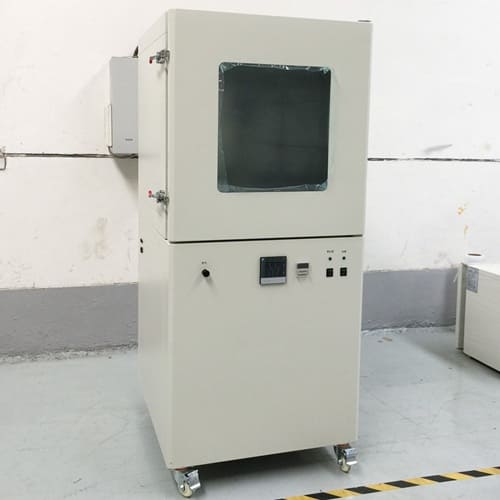
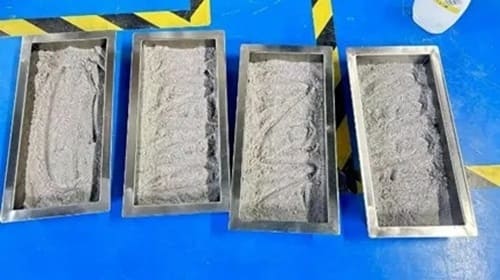
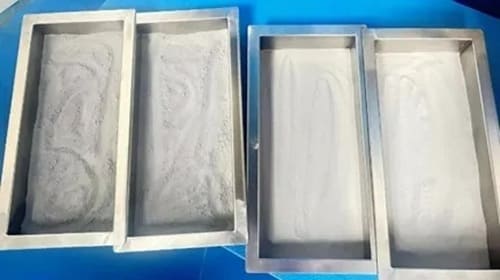
Safety Considerations
Fire and Explosion Risks
Reactive metal powders, such as aluminum and magnesium, pose significant fire and explosion risks when exposed to humidity. Moisture can trigger exothermic reactions, potentially leading to spontaneous combustion. To mitigate these risks, store reactive powders in inert gas environments and avoid any contact with water or high-humidity conditions. Ensure storage areas are equipped with fire suppression systems and are free from ignition sources.
Personal Protective Equipment (PPE)
When handling metal powders, personnel should wear appropriate PPE, including gloves, masks, and protective eyewear, to prevent inhalation or skin contact with potentially contaminated powders. Moisture can exacerbate the risk of powder dispersion, increasing inhalation hazards. Training on PPE usage and maintaining a clean workspace are essential to minimize contamination risks.
Request a custom quote for high-quality metal powder products.
Industry Standards and Guidelines
Relevant Standards
Adhering to industry standards ensures consistent quality and safety in metal powder storage. Standards such as ASTM B243 (Terminology of Powder Metallurgy) and ISO 3252 (Powder Metallurgy Vocabulary) provide guidelines on handling and storage conditions. Additionally, industry-specific standards, such as those from the Additive Manufacturing Standardization Collaborative (AMSC), outline best practices for powder storage in 3D printing applications.
Compliance
Compliance with these standards is critical for maintaining product quality and meeting regulatory requirements. Regular audits of storage facilities, documentation of environmental conditions, and adherence to safety protocols are necessary to ensure compliance. Non-compliance can result in material waste, production delays, and safety incidents, underscoring the importance of following established guidelines.
At Heeger Materials, we supply optimized-grade metal powder products that comply with ASTM, ISO, and AMS standards, ensuring outstanding quality and reliability.
In conclusion, preventing humidity contamination of metal powders requires careful attention to storage conditions, the use of appropriate containers, and regular monitoring. By following the best practices outlined above, manufacturers and industries that rely on metal powders can ensure that these materials remain in optimal condition, free from the detrimental effects of moisture.
For top-quality metal powder products, Heeger Materials provides tailored solutions for various applications.
Looking for premium metal powder products? Contact us today!


